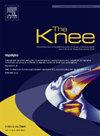Real-implant articulating spacers for chronic knee prosthetic joint infection have similar infection control rates as all-cement spacer constructs
IF 2
4区 医学
Q3 ORTHOPEDICS
引用次数: 0
Abstract
Introduction
Antibiotic eluting cement spacers are commonly used to treat prosthetic joint infection (PJI) in the setting of knee arthroplasty, however, controversy exists regarding the optimal spacer design. The purpose of this study was to evaluate: 1) post-operative 30-day complications; 2) reoperations over the study period; 3) and ultimate infection control between real-implant versus all-cement spacers in the setting of two-stage revision treatment for chronic knee PJI. We hypothesize that complications and infection control outcomes will be similar between spacer constructs.
Methods
This is a retrospective, tertiary referral, single-center analysis. Inclusion criteria included: chronic knee prosthetic joint infection undergoing planned two-stage revision, and minimum 1-year follow-up (mean 43 months) (N = 46 patients). Demographics, infection characteristics, surgical characteristics, and spacer type were collected. Multivariable logistic regressions evaluated associations of underlying demographic and treatment characteristics with outcomes.
Results
30-day post-operative complication rates were not different between real-implant and all-cement spacer groups. In the real-implant group, 10/29 patients (34.5 %) had 30-day complications compared to 5/17(29.4 %) of all-cement spacer group (OR 5.68; 95 % confidence interval 0.39 to 82.96; p = 0.723). Unexpected reoperations were also similar between the two groups with 7/17 (41.2 %) of the all-cement group and 9/29 (31 %) of the real-implant group undergoing an unexpected reoperation (OR:0.40; 95 % CI: 0.04 to 3.93; p = 0.065). Infection control at final follow up was similar between the two groups with 12/17 (70.6 %) of the all-cement group and 26/29 (89.7 %) of the real-implant groups achieving infection control (p = 0.100).
Discussion
We found that post-operative complications, unexpected reoperations, and infection control outcomes were similar between all-cement and real-implant spacers. These results suggest that real-implant spacers may not compromise infection control outcomes while possibly providing functional benefits to patients after Stage I treatment for chronic PJI.
慢性膝关节感染的真实植入关节间隔器与全水泥间隔器具有相似的感染控制率
抗生素洗脱水泥间隔剂通常用于膝关节置换术中治疗假体关节感染(PJI),然而,关于最佳间隔剂设计存在争议。本研究的目的是评估:1)术后30天的并发症;2)研究期间的再操作;3)慢性膝关节PJI两期翻修治疗中真实植入物与全水泥间隔物的最终感染控制。我们假设并发症和感染控制结果在间隔装置之间是相似的。方法回顾性、三级转诊、单中心分析。纳入标准包括:慢性膝关节假体关节感染,计划两阶段翻修,至少1年随访(平均43个月)(N = 46例)。收集人口统计学、感染特征、手术特征和垫片类型。多变量logistic回归评估了潜在的人口学特征和治疗特征与结果的关联。结果全骨水泥间隔器组与全骨水泥间隔器组术后30天并发症发生率无显著差异。在real-implant组中,10/29(34.5%)患者出现了30天的并发症,而全水泥间隔器组的5/17(29.4%)患者出现了30天的并发症(OR 5.68; 95%可信区间0.39 ~ 82.96;p = 0.723)。两组间意外再手术的发生率相似,全骨水泥组7/17(41.2%),实种植体组9/29(31%)发生意外再手术(OR:0.40; 95% CI: 0.04 ~ 3.93; p = 0.065)。两组最终随访时感染控制情况相似,全骨水泥组12/17例(70.6%)感染控制,实种植体组26/29例(89.7%)感染控制(p = 0.100)。我们发现全骨水泥和真实种植间隔器的术后并发症、意外再手术和感染控制结果相似。这些结果表明,real-implant spacer可能不会影响感染控制结果,同时可能为慢性PJI I期治疗后的患者提供功能益处。
本文章由计算机程序翻译,如有差异,请以英文原文为准。
求助全文
约1分钟内获得全文
求助全文
来源期刊

Knee
医学-外科
CiteScore
3.80
自引率
5.30%
发文量
171
审稿时长
6 months
期刊介绍:
The Knee is an international journal publishing studies on the clinical treatment and fundamental biomechanical characteristics of this joint. The aim of the journal is to provide a vehicle relevant to surgeons, biomedical engineers, imaging specialists, materials scientists, rehabilitation personnel and all those with an interest in the knee.
The topics covered include, but are not limited to:
• Anatomy, physiology, morphology and biochemistry;
• Biomechanical studies;
• Advances in the development of prosthetic, orthotic and augmentation devices;
• Imaging and diagnostic techniques;
• Pathology;
• Trauma;
• Surgery;
• Rehabilitation.
 求助内容:
求助内容: 应助结果提醒方式:
应助结果提醒方式:


